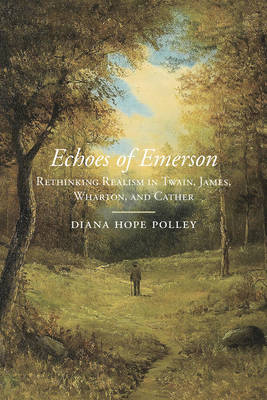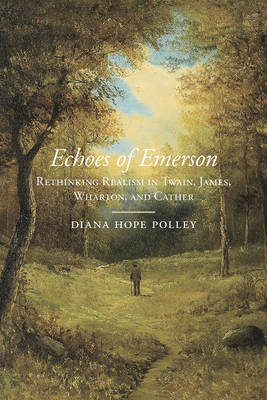
- Afhalen na 1 uur in een winkel met voorraad
- Gratis thuislevering in België vanaf € 30
- Ruim aanbod met 7 miljoen producten
- Afhalen na 1 uur in een winkel met voorraad
- Gratis thuislevering in België vanaf € 30
- Ruim aanbod met 7 miljoen producten
Zoeken
€ 60,95
+ 121 punten
Omschrijving
Winner of the 2018 Robert Penn Warren--Cleanth Brooks Award for Outstanding Literary Scholarship and Criticism" from the Center for Robert Penn Warren Studies at Western Kentucky University Probes the ways in which two major periods in nineteenth-century American literature--Romanticism and Realism--have come to be understood and defined. Echoes of Emerson: Rethinking Realism in Twain, James, Wharton, and Cather traces the complex and unexplored relationship between American realism and the philosophy of Ralph Waldo Emerson. Critics often read American realism as a clear disavowal of earlier American romantic philosophy and as a commitment to recognizing the stark realities of a new postbellum order. Diana Hope Polley's study complicates these traditional assumptions by reading American realism as an ongoing dialogue with the ideas--often idealisms--of America's greatest romantic philosopher, Ralph Waldo Emerson. In this illuminating work, Polley offers detailed readings of Mark Twain's Adventures of Huckleberry Finn, Henry James's The Portrait of a Lady, Edith Wharton's The House of Mirth, and Willa Cather's My Ántonia--all through the lens of Emersonian philosophy and discourse. This unique contribution to nineteenth- and early twentieth-century literary studies shows how these texts revisit Emerson's antebellum "republic of the spirit" philosophy, specifically the trope of the Emersonian hero/heroine navigating the harsh contingencies of the modern world. Romanticism and realism are often seen as opposing binaries, with romanticism celebrating the individual, self-reliance, and nature and realism emphasizing the weight of socio-historical forces. Realism is often characterized as rejecting the transcendent principles of Emersonian thought. Rather than accept those distinct boundaries between romance and realism, Polley argues that American realists struggled between celebrating Emerson's core philosophies of individual possibility and acknowledging the stark "realities" of American social and historical life. In short, this study recognizes within realism a divided loyalty between two historical trends and explores how these seemingly contradictory notions--Emerson's romantic philosophy and later nineteenth-century visions of historical reality--exist, simultaneously, within the literature of the period.
Specificaties
Betrokkenen
- Auteur(s):
- Uitgeverij:
Inhoud
- Aantal bladzijden:
- 192
- Taal:
- Engels
- Reeks:
Eigenschappen
- Productcode (EAN):
- 9780817319564
- Verschijningsdatum:
- 17/10/2017
- Uitvoering:
- Hardcover
- Formaat:
- Genaaid
- Afmetingen:
- 155 mm x 231 mm
- Gewicht:
- 408 g

Alleen bij Standaard Boekhandel
+ 121 punten op je klantenkaart van Standaard Boekhandel
Beoordelingen
We publiceren alleen reviews die voldoen aan de voorwaarden voor reviews. Bekijk onze voorwaarden voor reviews.











